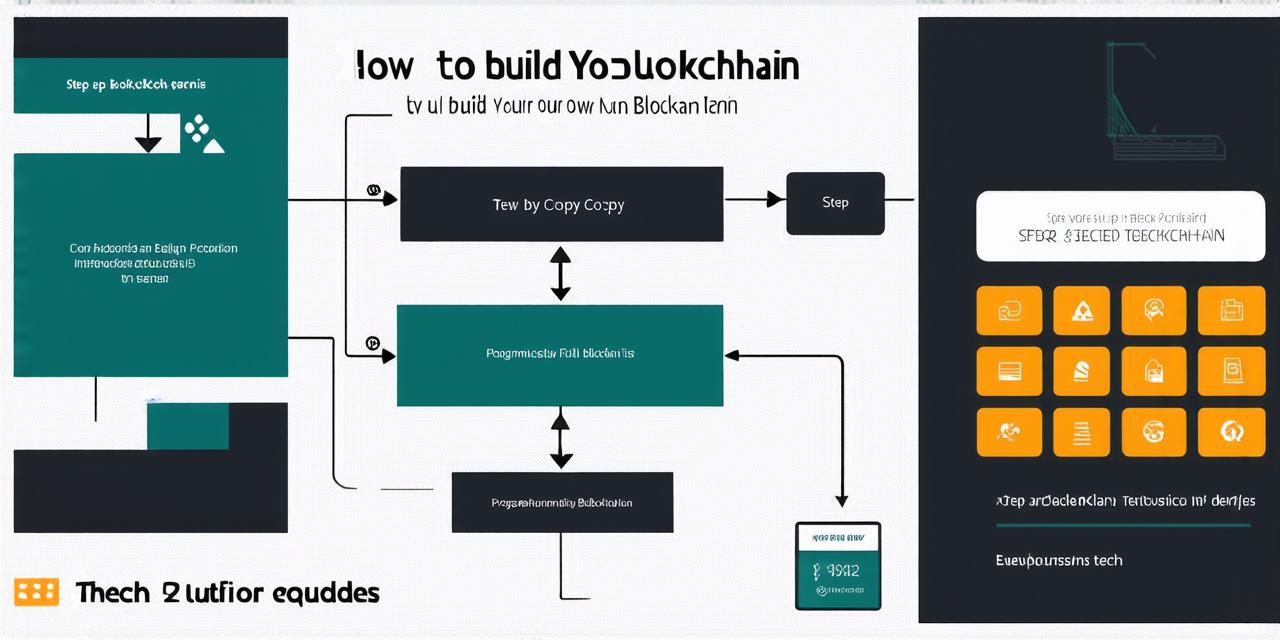Introduction
Blockchain technology is rapidly gaining popularity among businesses and individuals alike due to its decentralized nature and potential for increased security and transparency. However, building a blockchain from scratch can be a daunting task, requiring a deep understanding of cryptography, distributed systems, and programming languages. In this article, we will provide a comprehensive guide on how to build your own blockchain, taking into consideration the various factors involved in the process.
Choosing the Right Platform
The first step in building your own blockchain is choosing the right platform. There are several platforms available, each with its own unique features and capabilities. Some popular options include Ethereum, Hyperledger Fabric, Corda, and Quorum. Each of these platforms has its own programming language, making it important to choose one that you are comfortable with.
Another factor to consider is the type of blockchain you want to build. There are several types of blockchains, including public, private, and hybrid. Public blockchains, such as Bitcoin and Ethereum, are open to anyone and allow for anonymous participation. Private blockchains, on the other hand, are restricted to a specific group of participants and require permission to join. Hybrid blockchains combine elements of both public and private blockchains, allowing for a more flexible and customizable approach.
Designing the Blockchain Architecture
Once you have chosen your platform and decided on the type of blockchain you want to build, it’s time to design the architecture. The architecture of a blockchain consists of several key components, including the nodes, the consensus mechanism, and the smart contracts.
Nodes are the computers that participate in the network and validate transactions. They store a copy of the blockchain and ensure that all participants have access to the same information. The consensus mechanism is used to reach agreement among the nodes on which transactions to include in the blockchain. Smart contracts are self-executing programs that automate the enforcement of rules and regulations on the blockchain.
When designing the architecture of your blockchain, it’s important to consider scalability and security. You will want to ensure that your blockchain can handle a large number of transactions without becoming slow or unresponsive. Additionally, you will want to implement security measures to protect against attacks and ensure the integrity of the blockchain.
Implementing the Blockchain

With the architecture designed, it’s time to implement the blockchain. This involves writing code to create the nodes, implement the consensus mechanism, and deploy the smart contracts. Depending on the platform you chose, this may involve using a specific programming language or following a set of instructions provided by the platform.
It’s important to test your blockchain thoroughly before launching it to ensure that it is functioning correctly and securely. This includes testing for bugs, vulnerabilities, and performance issues. You may also want to consider conducting a stress test to see how well your blockchain can handle a large number of transactions.
Real-Life Examples of Blockchain Development
There are many real-life examples of blockchain development that can provide inspiration and guidance for those looking to build their own blockchain. One such example is the development of the Ethereum blockchain, which has been used to create decentralized applications (dApps) for a wide range of use cases, including supply chain management, voting systems, and financial services.
Another example is the development of the Hyperledger Fabric blockchain, which has been used by companies such as IBM and Walmart to create private blockchains for supply chain management and traceability purposes. The Corda blockchain, developed by Ripple Labs, has also been used in various industries, including finance, healthcare, and logistics.
FAQs
Q: What is the difference between a public and private blockchain?
A: A public blockchain is open to anyone and allows for anonymous participation, while a private blockchain is restricted to a specific group of participants and requires permission to join.
Q: How do I choose the right platform for my blockchain development project?
A: Consider factors such as programming language support, scalability, and security when choosing a platform for your blockchain development project.
Q: What are some real-life examples of blockchain development?
A: The Ethereum blockchain has been used to create decentralized applications (dApps) for a wide range of use cases, while the Hyperledger Fabric and Corda blockchains have been used by companies in various industries.
Summary
Building your own blockchain can be a challenging but rewarding project. With the right platform, architecture, and implementation, you can create a secure and scalable blockchain that meets your specific needs. By studying real-life examples of blockchain development and following best practices, you can ensure that your blockchain is successful and effective. As technology continues to evolve, it’s likely that we will see even more innovative uses for blockchain in the future.
